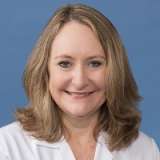Medical Education in the Time of COVID-19
Spring 2020

Just as every aspect of our society has changed in reaction to the COVID-19 pandemic, medical education has also had to adapt quickly and modify its methods. No longer will you find large teams of trainees (medical students, residents and fellows) and attending physicians roaming the halls of the hospital as they round on patients, nor groups of residents teaching a cohort of medical students while huddled together in work rooms, nor multi-disciplinary teams of care providers and trainees entering a clinic room to see a patient. Yet the system has adapted extraordinarily quickly to carry out all of these tasks and to attain the same objectives so that training and patient care have continued in a different way rapidly changing and moving on in an uninterrupted fashion.
Implementation of remote communication technology has allowed for this quick transformation to our usual process in medical education. We have been able to modify our teaching methodologies to provide the necessary content while enabling participation of individuals scattered by social distancing, in compliance with public health recommendations. This has been an easy adjustment for material that was being provided in didactic format before the COVID-19 crisis: lectures, seminars, etc. But one unrealized advantage of providing this content remotely has been the significant increase in the number of participants, enabling inclusion of a much broader audience. In some educational areas, the number of attendees has essentially quadrupled in the time of COVID-19.
A bigger challenge has been the modification of clinical training – the training of medical students, residents and fellows that happens at the patient bedside. The inability to have large teams working together in the hospital and clinic settings could potentially hamper acquisition of clinical skills for our trainees. However, this too, has adapted rapidly and it is once again thanks to the use of remote access technology bringing together patients and providers. Telemedicine/telehealth has been available for more than a decade but widespread use has been limited by lack of insurance coverage. In the time of COVID-19, remote patient care has become imperative and fortunately insurance companies have finally dropped their restrictions (some temporarily, some permanently). Leading the way within the Health System, the Neurology Department has made a quick transformation to convert the bulk of our outpatient visits into telehealth visits. This is true of medical education as well, with Neurology being one of only two departments in the medical school to incorporate telemedicine into the medical student curriculum. Now patients are once again joined with attending physicians/faculty, residents and medical students for their outpatient appointments. Instead of being packed into a clinic room, each person is in their own home or office and brought together on the computer screen--Brady Bunch style, each in their own square. This technology is being implemented for inpatient care, as well, in an effort to ensure the safety of patients and health care providers, conserve valuable personal protective equipment (PPE), while still providing top-quality care. Once again, Neurology has led these efforts within the Health System.
The continued evolution of the COVID-19 pandemic means that there will not be a complete or rapid return to our previous methods and we must begin to accept a new normal in medical education. The lessons learned during the quick transformation in the first few weeks of the COVID-19 crisis have revealed that there are some definite improvements in medical education offered by remote instruction. We are reaching larger audiences, incorporating more trainees and participants in lectures, morning report, case-based discussions and also expanding clinical care by incorporating telemedicine more broadly. The new normal in medical education that is gradually emerging, will be better overall, combining the best of both worlds pre- and post- COVID-19 crisis.